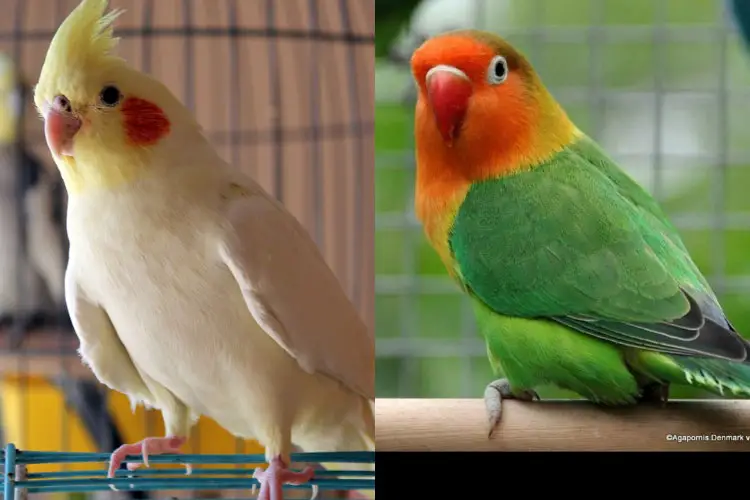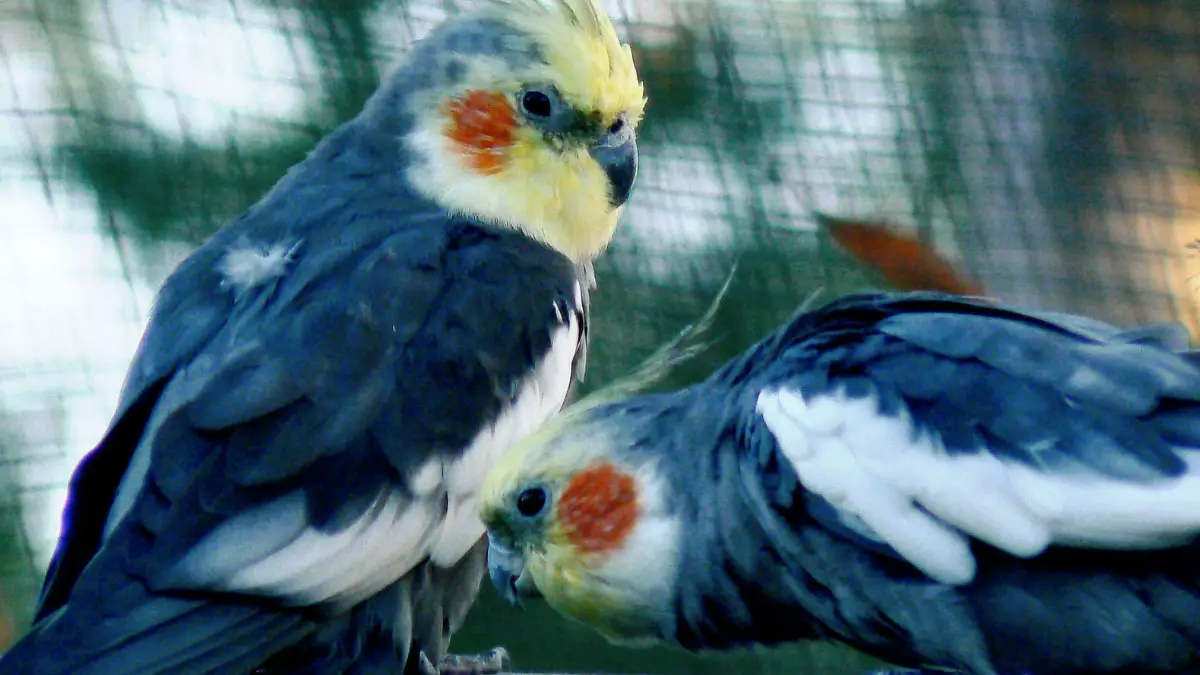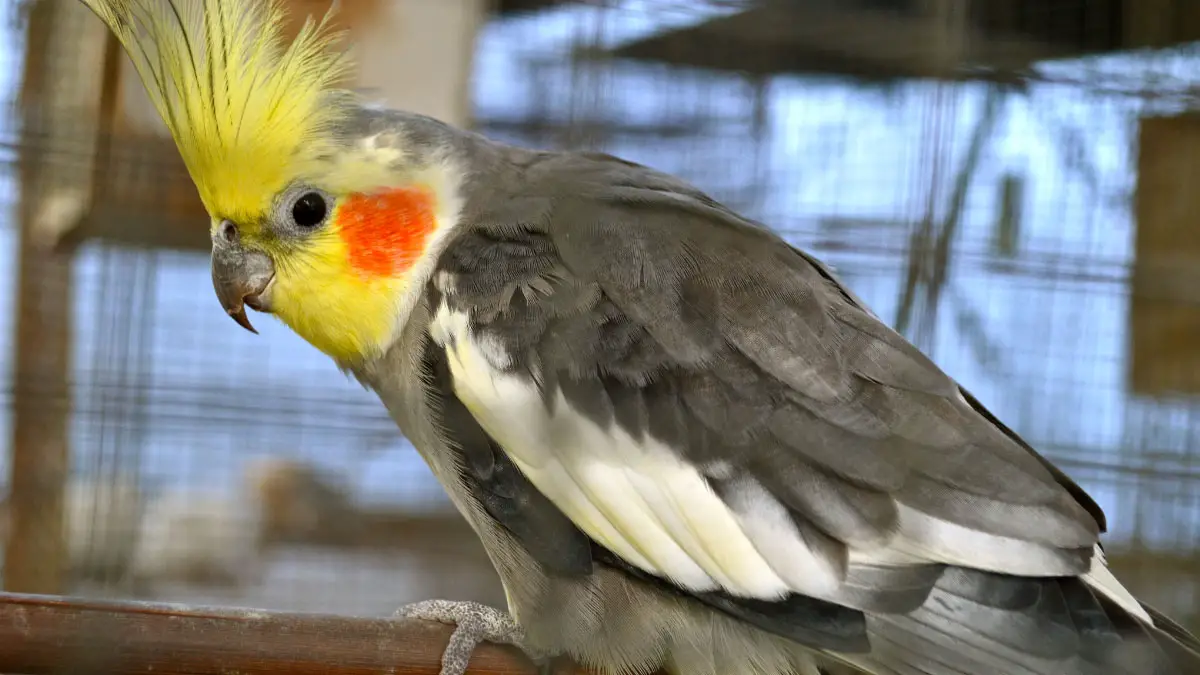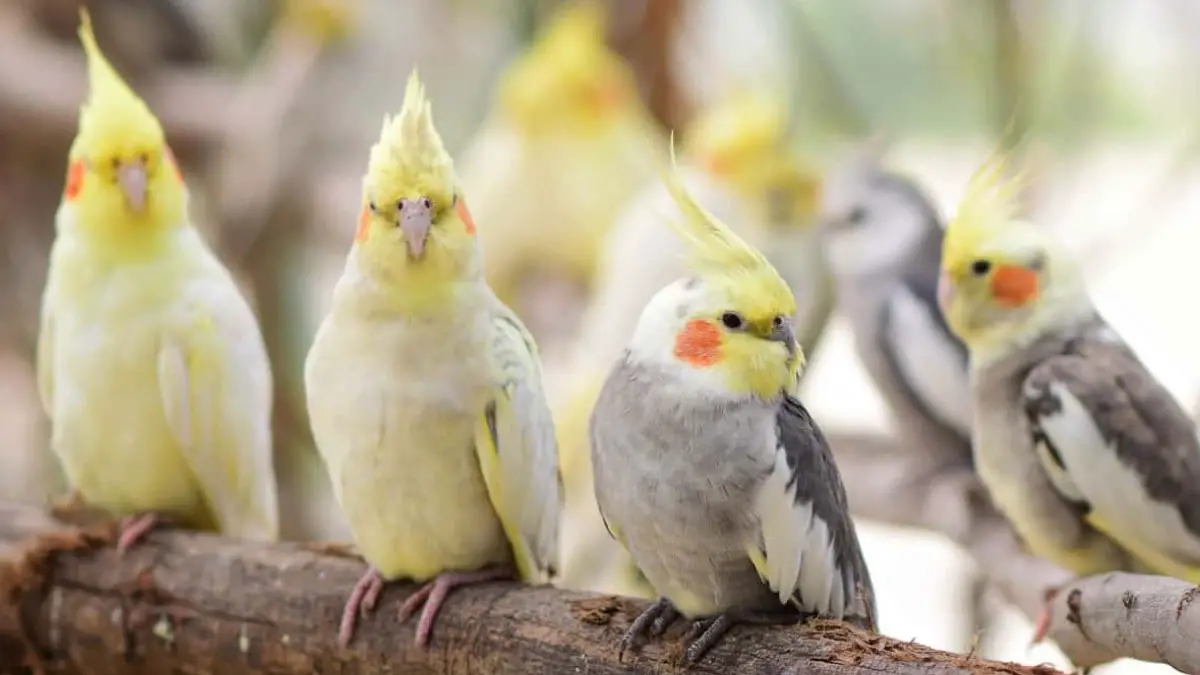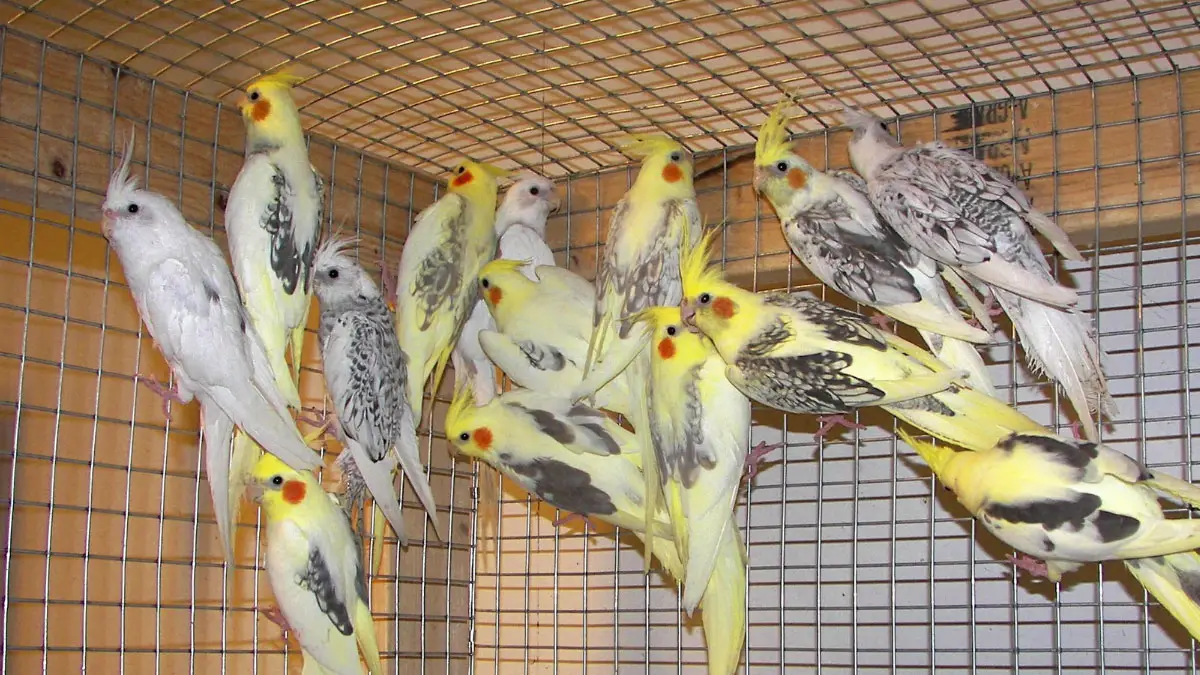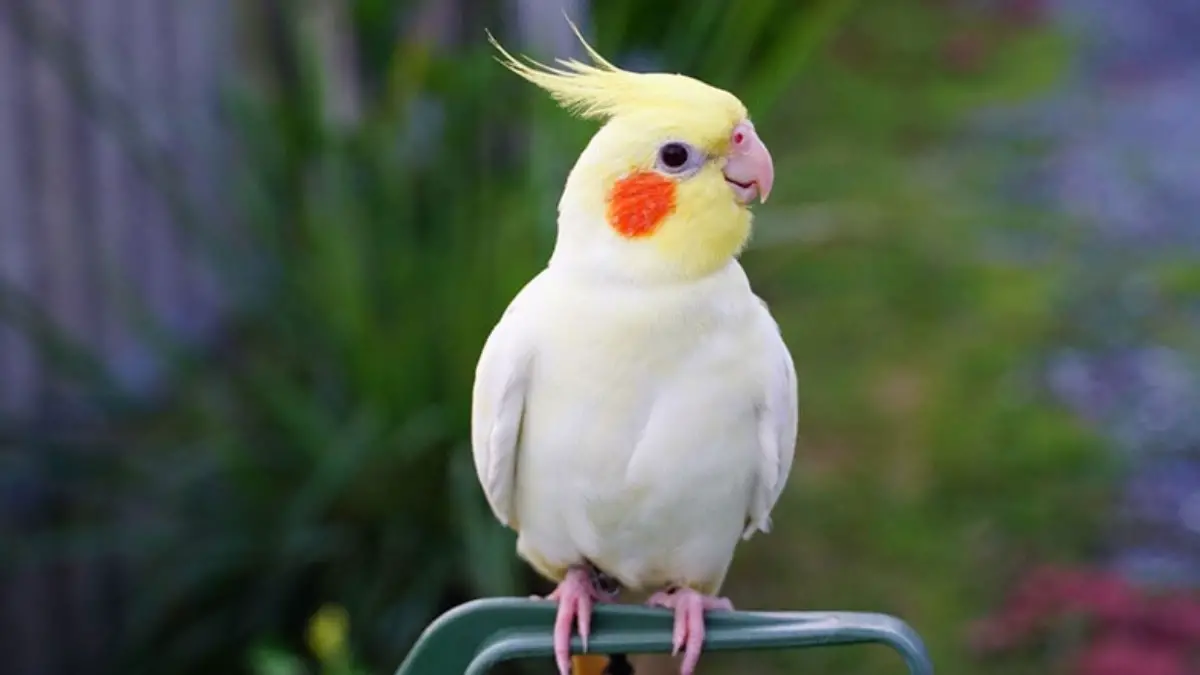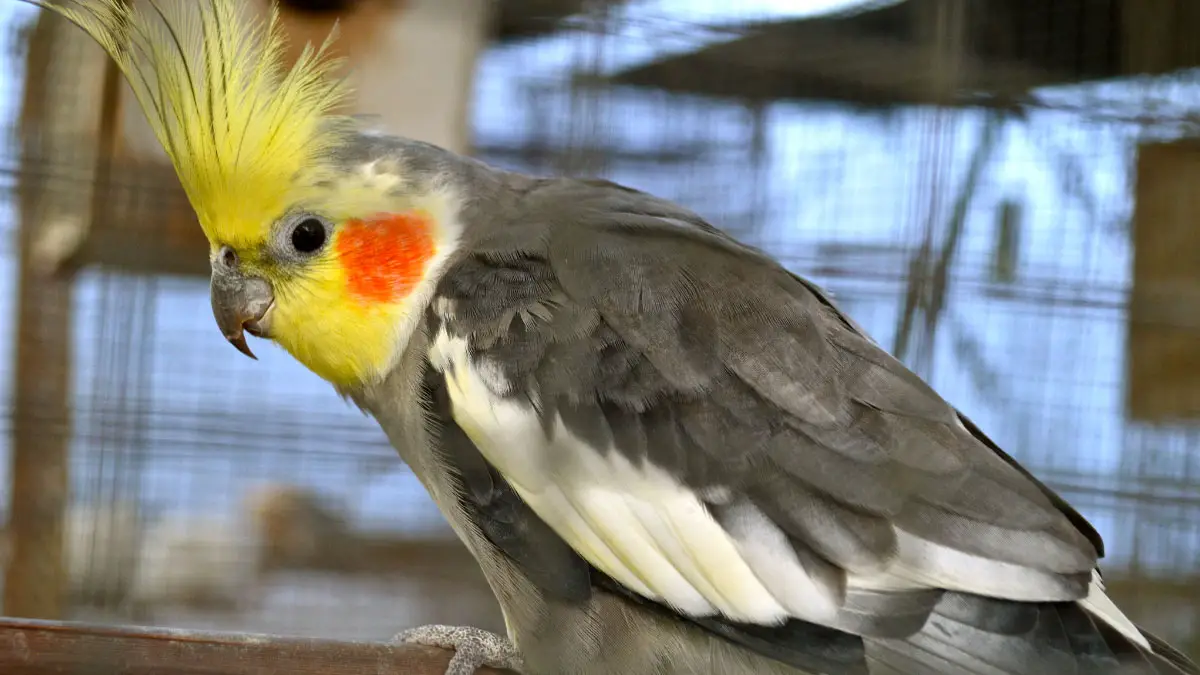Currently, there are more than 350 parrot species available in the world. The cockatiel and lovebird are among the oldest species, having been discovered in 1770 and 1836, respectively. But are there any differences or similarities between a cockatiel vs. a lovebird?
The answer is yes. Both birds share many similarities, including being social, affectionate, and trainable. However, many features also tear them apart. For instance, their size, origin, cage requirements, color, weight, lifespan, and the number of eggs clutches they lay.
Want to know more about cockatiel vs lovebird: identification, differences, & similarities? Continue scrolling through and find out which bird is more of your type.
Cockatiel Vs Lovebird Differences based on Identification Factors
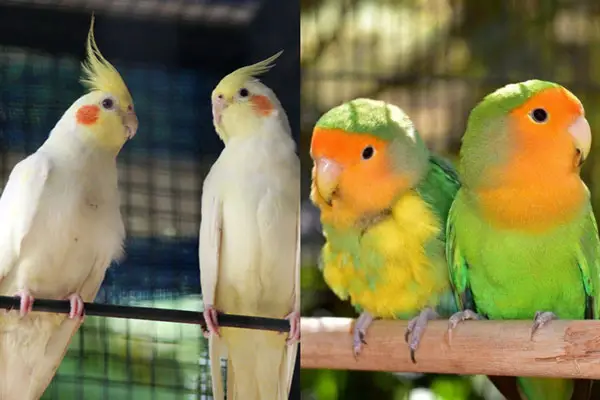
Before we dive into the differences and similarities between cockatiels and lovebirds, let’s quickly check out their unique characteristics that will also help you identify both these birds.
| Identification Factors | Cockatiel | Lovebird |
| Size | 12 to 13 inches in length | 5 to 7 inches in length |
| Weight | 90 to 120 grams (3.2 to 4.2 ounces) | 40 to 60 grams (1.4 to 2.1 punches) |
| Lifespan | 20 to 25 years (captivity)10 to 15 years (wild) | 10 to 20 years (captivity)5 to 15 years (wild) |
| Color | Gray body, yellow face, and orange-patched cheeks | Green plumage with black-masked or peach-colored cheeks |
| Origin | Australia | Central and Southern African regions and the Indian Ocean |
| Family and genus | Genus Nymphicus and cockatoo family | Genus Agapornis and Psittaculidae family |
| Minimum cage size (single bird) | 24 by 18 by 24 inches | 18 by 18 by 18 inches |
What Are The Differences Between Cockatiel and Lovebird
The decision can be daunting when you have to choose between a cockatiel and a lovebird. This is because both birds make loving pets. Nothing to worry about, though, because below are their differences.
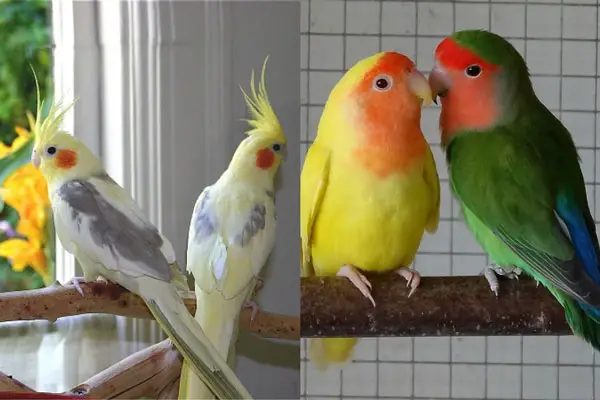
1. Size and weight
An adult cockatiel is about 12 to 13 inches in size from head to tail. In terms of weight, this bird is approximately 90 to 120 grams or 3.2 to 4.2 ounces.
Meanwhile, a mature lovebird measures 5 to 7 inches in length from the beak to the tips of the tail feathers. Therefore, it is smaller in size than the cockatiel. This pet bird is also not heavy, weighing between 40- and 60 grams, equivalent to 1.4 to 2.1 ounces.
2. Color
A cockatiel is gray, regardless of the mutation, with a yellow face and round orange patches on the cheek. However, the abdomen and chest are slightly lighter than the back.
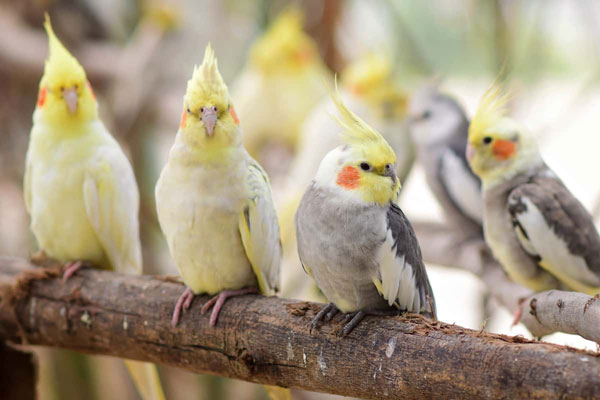
The color of a lovebird varies widely based on the species. Even so, most lovebirds have a peach-colored or black-masked face with green plumage.
3. Cage requirements
A cockatiel is relatively larger in size than a lovebird. Because of this, the minimum cage size for a single cockatiel bird is 24-inches long by 18-inches wide by 24-inches high.
On the other hand, if you have a single lovebird, an 18-inch by 18-inch by 18-inch cage should be okay. And for a pair of birds, it should be at least the same size as a cage for a single cockatiel.
4. Origin
Cockatiels are native to the outback regions of Australia. You can find them throughout the country, especially in the southwest parts.
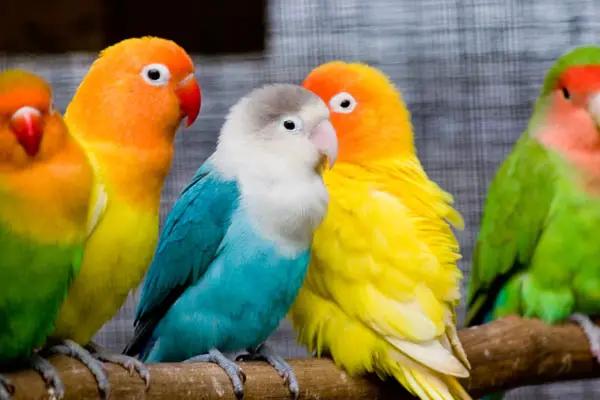
As for lovebirds, these pet birds are native to the Indian Ocean, in central and southern Africa. You will often find them in the savannas and forests of Madagascar and Sub-Saharan Africa.
5. Family and genus
The cockatiel belongs to the genus Nymphicus and the Cacatuidae or cockatoo family, just like the parakeets. There are about 21 bird species belonging to this genus.
On the other hand, the lovebird belongs to the Psittaculidae family and the genus Agapornis. Overall, there are about nine lovebird species that belong to this genus.
6. Egg laying
Cockatiels will lay 1 to 2 clutches of eggs in a year. Each clutch may contain 2 to 8 eggs on average. However, these birds only lay a single egg every 48 hours until the clutch is full.
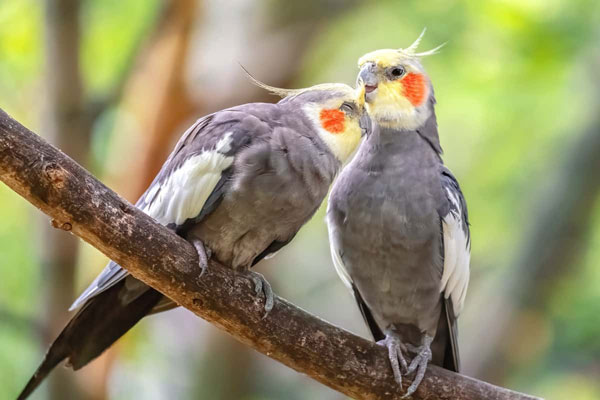
Unlike cockatiels, lovebirds lay eggs frequently, ranging from 5 to 6 clutches yearly. In each clutch, you will find 4 to 6 eggs. And like the cockatiels, these pet birds lay one egg after every two days.
7. Behavior
Compared to lovebirds, cockatiels are docile birds and are considered one of the quieter parrot species. However, they can sometimes be aggressive when bored or due to aggregated hormonal changes.
On the other hand, lovebirds are pretty aggressive and very noisy. They are considered loud because their voice is high pitched.
8. Talking
Cockatiels can talk and mimic human speech. You can teach them to say several simple words or phrases, like hello. However, not all cockatiel species are excellent talkers.
Lovebirds are very chatty. However, these birds don’t talk even though they have the potential to mimic human speech. Instead, lovebirds prefer to chirp and chatter.
9. Lifespan
A cockatiel can live for 10 to 15 years in the wild. But in captivity, your bird can live between 20 and 25 years with proper care.
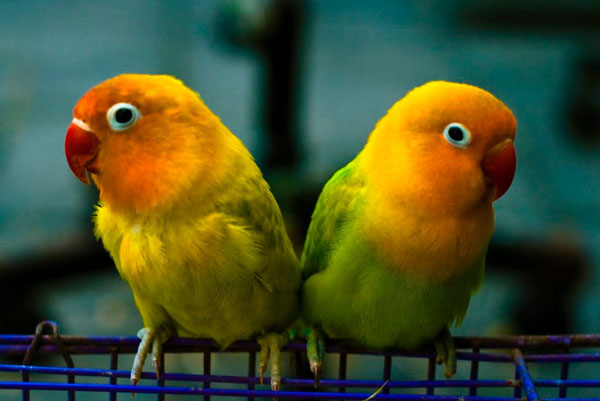
In the case of the lovebird, it can live from 5 to 15 years in the wild. However, this bird’s lifespan in captivity spans 10 to 20 years. Therefore, the cockatiel has a relatively long lifespan.
10. Cost
Overall, a lovebird is a little cheaper than a cockatiel. This is because, on average, a cockatiel will cost you between $80 and $250. The price varies based on the bird’s age, breed, and mutation.
A lovebird may cost anywhere between $25 and $150 when buying from a breeder. This price varies depending on whether your bird was parent-fed or hand-raised.
Cockatiel Vs. Lovebird Similarities
Cockatiels and lovebirds make good pet birds. But just as they have differences, they also boast several similarities. For instance, both birds are very friendly, affectionate, and intelligent. Other similarities include the following:
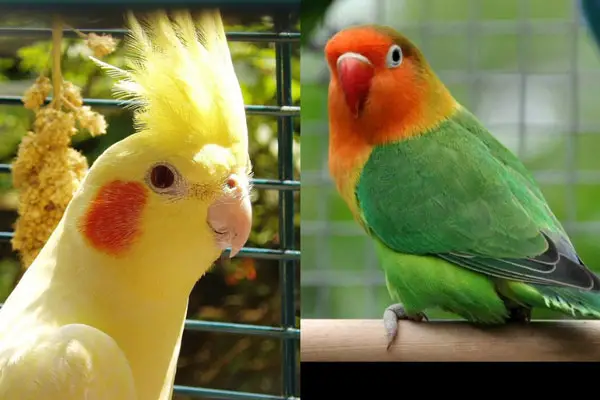
1. Active
These two pet birds are super active and lively. Therefore, you must let them out of their cage at least once daily so they can explore. Also, they need spacious aviaries with an array of toys to keep them stimulated.
2. Diet
Just like lovebirds, the diet of cockatiels comprises a range of seeds, pellets, fresh vegetables, fruits, legumes, and nuts. Both birds also feed on different herbs and flowers.
3. Trainable
Cockatiels and lovebirds are friendly birds, making them easy to train in various tricks. You can teach the birds to take a bow, turn around, sit on your shoulder, wave, and even dance. It is also possible to potty train these birds.
4. Sounds
These two pet birds are good at making different sounds when communicating with their own. They will chirp, whistle, squawk, scream, sing, click, and chatter softly.
5. Mating time
Your lovebirds and cockatiels can breed any time of the year. They only need at least 10-12 hours of light daily, whether natural or artificial.
Can You Keep Cockatiel and Lovebird Together?
The simple answer is no because these two birds boast different personalities. For instance, cockatiels can become very territorial during the breeding season regarding the nesting site and food.
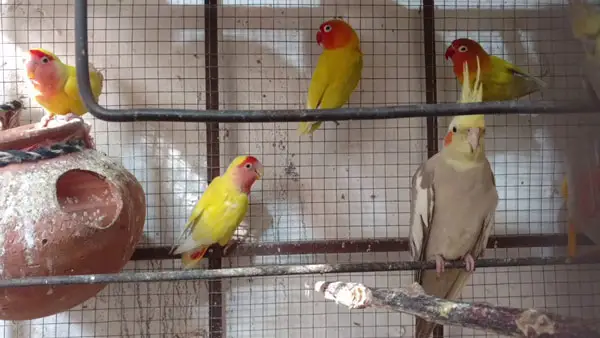
On the other hand, most lovebirds are naturally aggressive. Therefore, they can become violent if housed with gentle and docile cockatiels. So, the best thing would be to keep them in separate cages.
Can A Cockatiel And Lovebird Breed?
No. First, these two birds belong to different genera and families. Therefore, the birds don’t share sufficient genetic similarities. And as it turns out, parrots can only interbreed if they belong to the same taxonomic family.
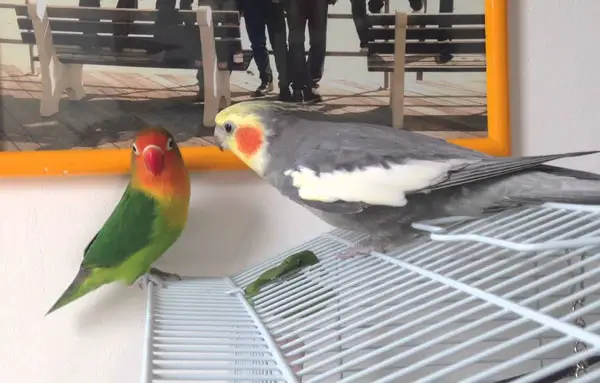
In this case, the cockatiel is from the Cacatuidae or cockatoo family, while the lovebird is from the Psittacidae family. So, if you attempt to breed a cockatiel and a lovebird, the offspring may have deformities.
Which Is Better: Cockatiel Vs. Lovebird?
Both birds make wonderful pets because they are friendly, affectionate, and can be tamed. However, a cockatiel is a better choice if you consider getting your first feathered pet. It is easy to tame at a young age and to care for.
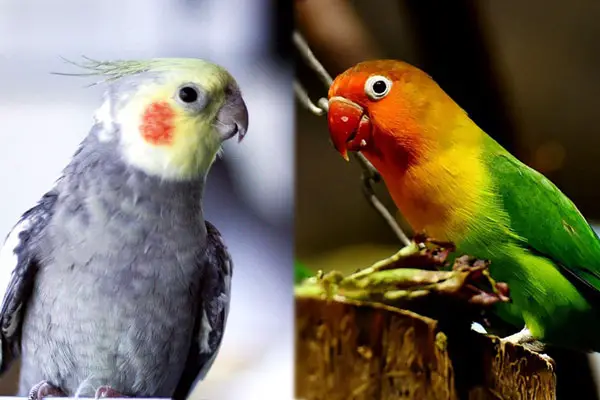
Meanwhile, if you want a very energetic and playful bird, you should get a lovebird. But you must be willing to give your bird a lot of attention and to put up with its bites.
FAQs
Before we conclude, let’s go through some frequently asked questions regarding cockatiel vs. lovebird.
It is a cockatiel. This explains why it is considered a beginner-friendly pet bird. Even so, both birds need a lot of patience when taming them.
Yes. Both birds can enjoy seed mixes, pellets, fresh herbs, legumes, fruits, nuts, vegetables, and flowers.
No. While both birds can be noisy, lovebirds produce more high-pitched sounds than cockatiels. Therefore, they are louder.
Outro
Although cockatiels and lovebirds share some similarities, their differences are many. Therefore, choosing which of the two matches, your preferences should be easy. After all, you cannot keep the two birds in one cage. Not to mention, cockatiels and lovebirds cannot breed.
